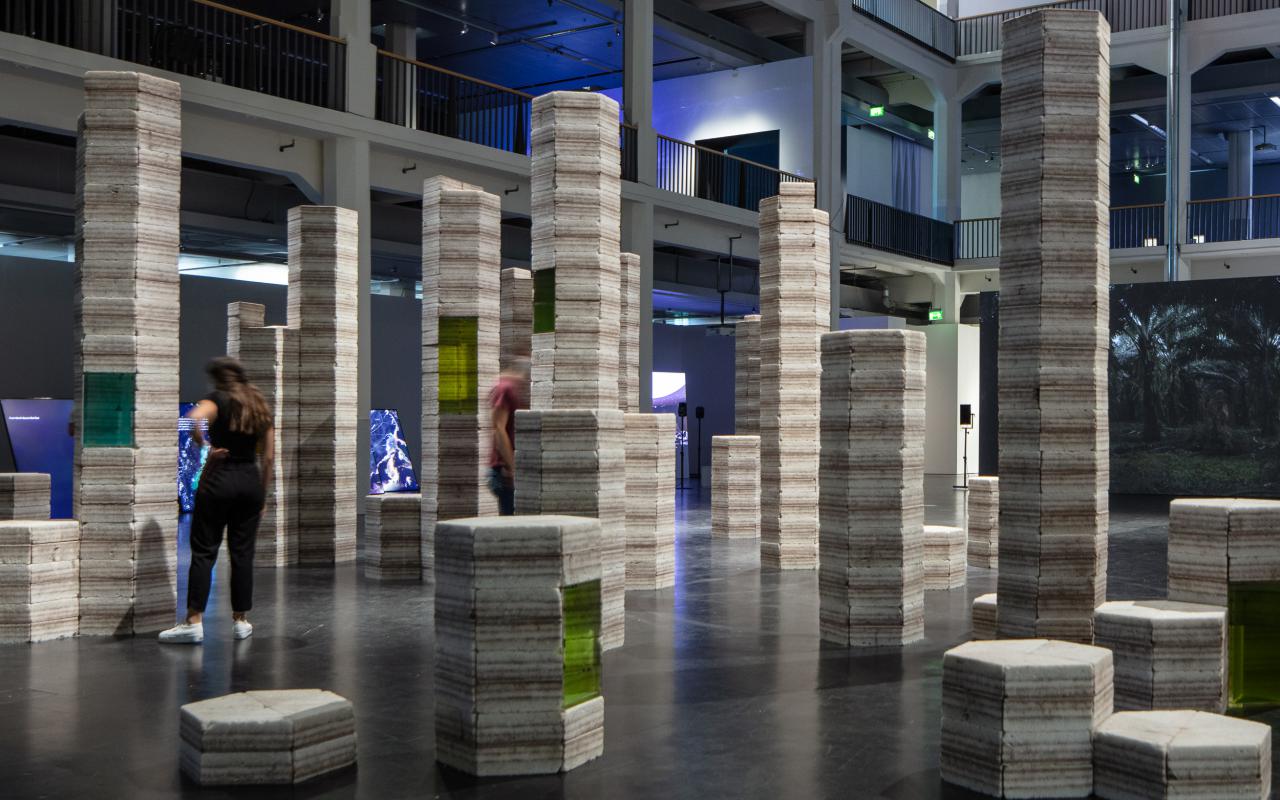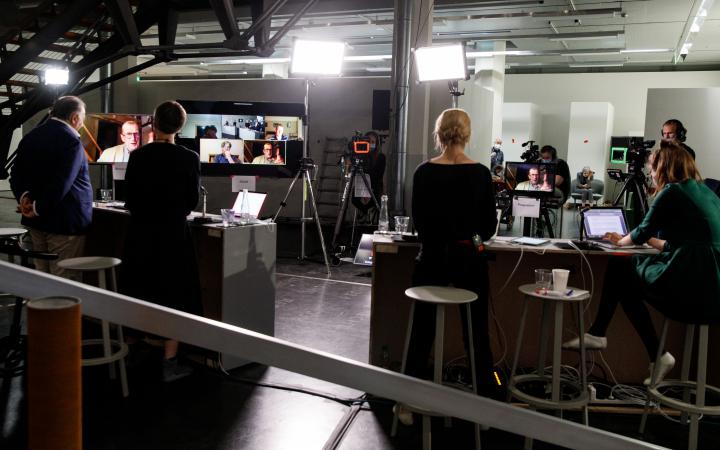
2013-02-01
Globalization: The End of Modern Art?
 How New York Stole the Idea of Modern Art (1983) is the title of Serge Guilbaut’s famous book. The question today is not how New York stole the idea of modern art but why. The answer is that by stealing modern art New York got the power and the monopoly to canonize modern art. The formula was simple: Everything that Hitler hated became good modern art. As you can read in the book Deutsche Kunst in New York (Gregor Langfeld , 2011), German art movements such as Expressionism, Bauhaus and Abstract Art (Kandinsky, Klee, etc.) were exhibited at private galleries and in the MoMA, NY as the art that Hitler hated and that he promoted under the title of degenerate art. The catalog of the 1957 show German Art of the 20th Century at the MoMA, claimed clearly that only the West can offer the medium of art as an expression of freedom and individuality. At the same time in Germany at the Darmstadt Colloquy (Darmstädter Gespräche, 1950-1975) Abstract Expressionism was touted as the only language of democracy and freedom. The use of Abstract Expressionism as Weapon of the Cold War is also analyzed in the famous article by Eva Cockcroft (Art Forum, vol. 15, no. 10, June 1974).
The political ideology of Western capitalism and the rhetoric of the Cold War, not aesthetics, served as a foundation and legitimation for the success of modern art. Realism in art was banned as a characteristic of totalitarian systems such as communism and fascism. Therefore, during the decades of the Cold War, modern art was protected by an ideological bubble, defending it from any criticism. But now, with the effects of globalization and the 1989 fall of the Berlin Wall marking the end of the Cold War, also a critique of modern art from a perspective beyond Euro-America seems possible.
Now we recognize that there is a new cartography of art as an effect of globalization. New continents and countries, from the Asian to the Arab world, enter the art world. But with this shift in attention, we experience not only a remapping of the cartography of art, but also a rewriting of art itself. The canon of modern art, linked more or less to the West, to the European–North American axis, is loosening. It may be, as the eminent art historian T. J. Clark has declared, that we are saying farewell to the epoch of modern art at the threshold of the twenty-first century (Farewell to an Idea: Episodes from a History of Modernism, 1999).
We can observe and name at least several transformations of modern art. The starting point of these transformations is the evidence that in the global art world the keyword is not any more ‘modern’, but ‘contemporary’. From the museum names to auction catalog titles, the word “modern” is substituted by the word “contemporary.” With a fine nose for the Zeitgeist, artist Tino Sehgal instructed his performers, the attendants of the German pavilion at the Biennale di Venezia 2005, to sing for every visitor: “Oh, this is so contemporary!” They did not say: “Oh, this is so modern!” We cannot claim that all the art now produced in Asia or Africa is modern, according to the canon of the West. But it is clear that this art is contemporary. To speak about art as contemporary art and not as modern art is already an effect of global transformations.
How New York Stole the Idea of Modern Art (1983) is the title of Serge Guilbaut’s famous book. The question today is not how New York stole the idea of modern art but why. The answer is that by stealing modern art New York got the power and the monopoly to canonize modern art. The formula was simple: Everything that Hitler hated became good modern art. As you can read in the book Deutsche Kunst in New York (Gregor Langfeld , 2011), German art movements such as Expressionism, Bauhaus and Abstract Art (Kandinsky, Klee, etc.) were exhibited at private galleries and in the MoMA, NY as the art that Hitler hated and that he promoted under the title of degenerate art. The catalog of the 1957 show German Art of the 20th Century at the MoMA, claimed clearly that only the West can offer the medium of art as an expression of freedom and individuality. At the same time in Germany at the Darmstadt Colloquy (Darmstädter Gespräche, 1950-1975) Abstract Expressionism was touted as the only language of democracy and freedom. The use of Abstract Expressionism as Weapon of the Cold War is also analyzed in the famous article by Eva Cockcroft (Art Forum, vol. 15, no. 10, June 1974).
The political ideology of Western capitalism and the rhetoric of the Cold War, not aesthetics, served as a foundation and legitimation for the success of modern art. Realism in art was banned as a characteristic of totalitarian systems such as communism and fascism. Therefore, during the decades of the Cold War, modern art was protected by an ideological bubble, defending it from any criticism. But now, with the effects of globalization and the 1989 fall of the Berlin Wall marking the end of the Cold War, also a critique of modern art from a perspective beyond Euro-America seems possible.
Now we recognize that there is a new cartography of art as an effect of globalization. New continents and countries, from the Asian to the Arab world, enter the art world. But with this shift in attention, we experience not only a remapping of the cartography of art, but also a rewriting of art itself. The canon of modern art, linked more or less to the West, to the European–North American axis, is loosening. It may be, as the eminent art historian T. J. Clark has declared, that we are saying farewell to the epoch of modern art at the threshold of the twenty-first century (Farewell to an Idea: Episodes from a History of Modernism, 1999).
We can observe and name at least several transformations of modern art. The starting point of these transformations is the evidence that in the global art world the keyword is not any more ‘modern’, but ‘contemporary’. From the museum names to auction catalog titles, the word “modern” is substituted by the word “contemporary.” With a fine nose for the Zeitgeist, artist Tino Sehgal instructed his performers, the attendants of the German pavilion at the Biennale di Venezia 2005, to sing for every visitor: “Oh, this is so contemporary!” They did not say: “Oh, this is so modern!” We cannot claim that all the art now produced in Asia or Africa is modern, according to the canon of the West. But it is clear that this art is contemporary. To speak about art as contemporary art and not as modern art is already an effect of global transformations.

However, globalization did not start in the 1980s as many believe. Globalization happened all the time since 1492 with the discovery of America. The first manifesto against globalization is the communist manifesto by Marx and Engels (1848):
“The need of a constantly expanding market for its products chases the bourgeoisie over the entire surface of the globe. It must nestle everywhere, settle everywhere, establish connexions everywhere. The bourgeoisie has through its exploitation of the world market given a cosmopolitan character to production and consumption in every country. To the great chagrin of Reactionists, it has drawn from under the feet of industry the national ground on which it stood. All old-established national industries have been destroyed or are daily being destroyed. They are dislodged by new industries, whose introduction becomes a life and death question for all civilised nations, by industries that no longer work up indigenous raw material, but raw material drawn from the remotest zones; industries whose products are consumed, not only at home, but in every quarter of the globe.” (Manifesto of the Communist Party, Chapter I)
Colonization as a part of globalization led to the discovery of ethnic art, especially in the nineteenth century. As a consequence, the attention and the interest of artists in the visual vocabulary of tribal art rose. Books such as Negerplastik by Carl Einstein (1920) and others from the same period, for example frikanische Plastik (1921) and Afrikanische Märchen und Legenden (1925) show how this interest influenced the rise of modern art from cubism to expressionism and surrealism. Another source for the genesis of modern art was the obscure spiritualism (see the catalogs of the exhibitions Traces du Sacré, Centre Pompidou, Paris [2008] and The Spiritual in Art: Abstract Painting 1890-1985, Los Angeles County Museum of Art [1987]). The result of these influences was the end of representation, the end of classical art and the beginning of modern art.
Around 1913 the classical program of art, as defined by Leonardo da Vinci, to “render visible the universal essence of things” by means of the science of painting using line, point, plane, volume, shadow, and light, was disbanded. The end of representing the world of visible things was declared. One school banned the object entirely from painting and just represented the formal elements of painting (lines, points, planes,…). This representation of the means of the medium painting, starting with Kazimir Malevich and finding in Wassily Kandinsky’s book the programmatic title Point and line to plane: contribution to the analysis of the pictorial elements (1926), is what we call abstract art and it dominated painting and sculpture in the twentieth century. But another school declared just the opposite: this school, starting with Marcel Duchamp, introduced the real object into the art system. The representation of reality was declared to be at an end. Instead, two different, even opposite strategies of representation followed: the representation of the means of art and the representation of things. The object as painterly representation was banned; instead the real object was introduced. Between this bracket, between this binary opposition, modern art happened and developed. Everything that formerly had been representation was substituted by reality: painted landscapes became land art; painted still lifes became collages, assemblages, installations, environments of real things; painted portraits became body art; genre paintings became performances, events, happenings; painted waterfalls were substituted by ‘real’ artificial waterfalls; painted fire was substituted by real fire. Real air, real earth, and real animals were exhibited and, finally, real people. The classical program of art, representation, came to an end with modern art. Representation was completely substituted by reality, by the reality of the elements of representation or the reality of things.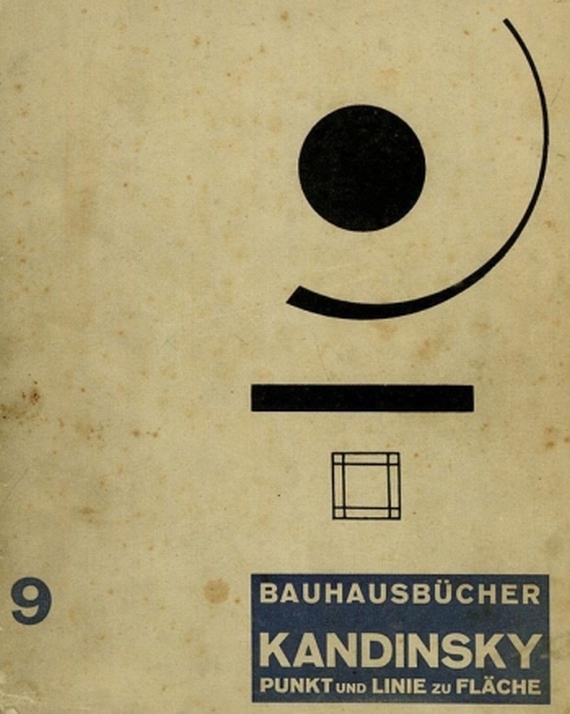 Slowly a third school arose in the twentieth century, beginning with photography – the reality of media. This school was in conflict with the doctrine of modern art, because photography, film, and video were still media of representation, although they could be combined with real things and real people in installations. Therefore, media were very fitting to transform the doctrine of modern art. Media art rewrote modern art by bridging the gap between representation of artistic means and representation of objects. They created a new reality: media reality.
It is evident that the most influential paradigm in twentieth century art was the covert hegemony of photography. Famous painters such as Francis Bacon, Gerhard Richter, or Andy Warhol have painted photographs or have derived their paintings from photographs. From Constantin Brancusi and Man Ray to Erwin Wurm, sculptors have been influenced by photography. Photographic documents are the remnants of land art, performance art, and other genres. Photography was the beginning of a long chain of new technical media of images: film, video, television, computer. The new paradigm of twenty-first century art is the global web, especially since the Web 2.0 revolution: access by all to all media at all times. “Anybody anything anytime anywhere” is the imperative of the new, digital age (see: the publication of a series of books by Cynthia Davidson under the titles Anywise [1996], Anybody [1997], Anyhow [1998], Anytime [1999], Anymore [2000], and Anything [2001]). The media experience has become universal. “Understanding Media” (M. McLuhan, 1964) is the prerequisite for understanding the world. We experience the world through media. “Whatever we know about society, or indeed about the world in which we live, we know through the mass media.” (N. Luhmann, The Reality of the Mass Media, 2000). With an iPod, everyone can make his own radio program: podcasting instead of broadcasting. With video casting everyone can make her own TV program: with the Net everyone has become a sender.
The advent of new media, new materials, and new technologies has had a tremendous effect on contemporary art production. Beyond the market and the museums a huge generation of young artists, designers, and architects all over the world have created a new culture, new visual and acoustic worlds in a new architecture. These productions are normally suppressed by art institutions and therefore the general public has no idea what contemporary art is really about. Contemporary artists all over the world, from Chile to China, work in all media. It would not be correct to neglect one medium (painting) at the expense of another (computer). An exhibition on contemporary art should include all media, all genres, and all disciplines – from sound art to performance art, from installation to painting, from sculpture to Net art – all contemporary forms of time-based and space-based art, because contemporary artists have expanded their vocabulary in all directions and into all media. The equality of materials and media is the artistic equation of our time. This media justice could also be defined as the post-media condition, since today everything is a medium, from a car to a painting. The triumph of media is not the existence of a new media art, but their influence and effect on classical art, from painting to sculpture (R. Krauss, A Voyage on the North Sea, 2000). The postmedia condition is defined by two phases: the equivalence of all media and the mixing of media.
Slowly a third school arose in the twentieth century, beginning with photography – the reality of media. This school was in conflict with the doctrine of modern art, because photography, film, and video were still media of representation, although they could be combined with real things and real people in installations. Therefore, media were very fitting to transform the doctrine of modern art. Media art rewrote modern art by bridging the gap between representation of artistic means and representation of objects. They created a new reality: media reality.
It is evident that the most influential paradigm in twentieth century art was the covert hegemony of photography. Famous painters such as Francis Bacon, Gerhard Richter, or Andy Warhol have painted photographs or have derived their paintings from photographs. From Constantin Brancusi and Man Ray to Erwin Wurm, sculptors have been influenced by photography. Photographic documents are the remnants of land art, performance art, and other genres. Photography was the beginning of a long chain of new technical media of images: film, video, television, computer. The new paradigm of twenty-first century art is the global web, especially since the Web 2.0 revolution: access by all to all media at all times. “Anybody anything anytime anywhere” is the imperative of the new, digital age (see: the publication of a series of books by Cynthia Davidson under the titles Anywise [1996], Anybody [1997], Anyhow [1998], Anytime [1999], Anymore [2000], and Anything [2001]). The media experience has become universal. “Understanding Media” (M. McLuhan, 1964) is the prerequisite for understanding the world. We experience the world through media. “Whatever we know about society, or indeed about the world in which we live, we know through the mass media.” (N. Luhmann, The Reality of the Mass Media, 2000). With an iPod, everyone can make his own radio program: podcasting instead of broadcasting. With video casting everyone can make her own TV program: with the Net everyone has become a sender.
The advent of new media, new materials, and new technologies has had a tremendous effect on contemporary art production. Beyond the market and the museums a huge generation of young artists, designers, and architects all over the world have created a new culture, new visual and acoustic worlds in a new architecture. These productions are normally suppressed by art institutions and therefore the general public has no idea what contemporary art is really about. Contemporary artists all over the world, from Chile to China, work in all media. It would not be correct to neglect one medium (painting) at the expense of another (computer). An exhibition on contemporary art should include all media, all genres, and all disciplines – from sound art to performance art, from installation to painting, from sculpture to Net art – all contemporary forms of time-based and space-based art, because contemporary artists have expanded their vocabulary in all directions and into all media. The equality of materials and media is the artistic equation of our time. This media justice could also be defined as the post-media condition, since today everything is a medium, from a car to a painting. The triumph of media is not the existence of a new media art, but their influence and effect on classical art, from painting to sculpture (R. Krauss, A Voyage on the North Sea, 2000). The postmedia condition is defined by two phases: the equivalence of all media and the mixing of media.
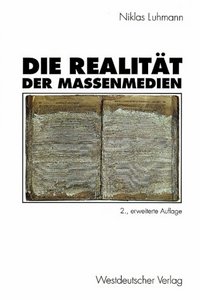 At the end of the twentieth century, after a battle of one hundred years, the equivalence of the media was finally achieved. Media art, from photography to film, became accepted as a genuine medium of art by collectors, curators, and museums. In this phase each medium has unfolded its own intrinsic material and conceptual qualities and possibilities. Painting has demonstrated the intrinsic value of paint by flowing and dripping techniques. Photography has demonstrated its ability to portray the object world realistically. Film has demonstrated its narrative capability. Video has demonstrated its critical subversion of the mass medium of television. Digital art has demonstrated its powers of imagination in virtual worlds. This phase is more or less completed.
The second phase, which is happening now, is the mixing and crossing of the media. Video, for example, triumphs with the narrative imagination of film by using multiple projections instead of one screen, and telling a story from many perspectives at the same time rather than from just one perspective. Video artists establish a strong relationship to the mass media. They refer to Hollywood stars and Hollywood genres. The mass media play a new role in video art. The border between art and film has blurred. Art as film and film as art has created a new genre. With the availability of new digital cameras and graphics programs, photography is abandoning the realistic world and inventing unseen, virtual worlds. Sculpture can consist of a photo or a videotape. Sculpture can be articulated in any medium: photography, video, or language. Language on LED screens can be a painting, a book, and a sculpture. Video and computer installations can be a piece of literature, architecture, or a sculpture. Photography and video art, originally confined to two dimensions, achieve spatial and sculptural dimensions in installations. Paintings refer to photography or digital graphics programs and use both. Computer graphics programs are called paint programs because they refer to painting. Film is proving to be increasingly dominant in documentary realism, which takes its critique of the mass media from video. The Web supplies dialogs and texts for all media in its chat rooms. The web can produce self-generative pictures and words.
This mixing of the media has led to extraordinary major innovations in each of the media and in art. No single medium is dominant any longer; instead, all of the different media influence and determine each other. The array of all media forms a universal medium. Most artistic practices are not subordinated to the task of representing reality, but instead make references to media. Most artistic productions use media in reference to other media.
References have replaced reality. Naturally, the effect of this tendency is also a counter-reaction: a reenactment of reality, a remaking of historic events, a reentry of history into the present. The reality check is also part of contemporary art practices.
These new arts no longer depicted reality in the way that a map depicts land; they rather create the land and construct the reality. If the predominant equation for twentieth century art can be expressed as: “Machinery, Materials, Men,” then the title of a lecture in 1930 by the architect F. L. Wright, presents the equation for twenty-first century art: “Media, Data, Men” (P. Weibel). The self-representation of the means of representation is as obsolete as the self-representation of things. Media art as an interface between people and the world constructs a world comprised of variables, a world that people can change and influence. The work of the artist now comes close to that of a natural scientist. Like the scientist, the media artist presides over a specific area of competence, such as the surgeon, the chemist, mathematician, physicist, that differentiates him from the amateur. The rise of the amateur, propagated by the dadaists and others, has been realized. Amateurs occupy the field of politics and popular culture. In the era of Reality-TV, the program of reality art sinks into oblivion. The forms of abstraction have fallen from the heroic and the sublime into the patterns of fashion. Thus, in mass culture as well as in art, (as a result of the bifurcation into abstract and realist art), we see the ubiquitous romanticizing of the banal and the trivial (A. C. Danto, The Transfiguration of the Commonplace, 1981). It is uniquely media art that has taken on a renaissance approach, has changed and expanded the arts again into a field of individual knowledge, that finds a second clarification in branches and areas of knowledge, as is necessary in an increasingly bureaucratized, globally networked world whose crises, from financial to climate, bear witness to a high degree of incompetence at the core of our civilization.
At the end of the twentieth century, after a battle of one hundred years, the equivalence of the media was finally achieved. Media art, from photography to film, became accepted as a genuine medium of art by collectors, curators, and museums. In this phase each medium has unfolded its own intrinsic material and conceptual qualities and possibilities. Painting has demonstrated the intrinsic value of paint by flowing and dripping techniques. Photography has demonstrated its ability to portray the object world realistically. Film has demonstrated its narrative capability. Video has demonstrated its critical subversion of the mass medium of television. Digital art has demonstrated its powers of imagination in virtual worlds. This phase is more or less completed.
The second phase, which is happening now, is the mixing and crossing of the media. Video, for example, triumphs with the narrative imagination of film by using multiple projections instead of one screen, and telling a story from many perspectives at the same time rather than from just one perspective. Video artists establish a strong relationship to the mass media. They refer to Hollywood stars and Hollywood genres. The mass media play a new role in video art. The border between art and film has blurred. Art as film and film as art has created a new genre. With the availability of new digital cameras and graphics programs, photography is abandoning the realistic world and inventing unseen, virtual worlds. Sculpture can consist of a photo or a videotape. Sculpture can be articulated in any medium: photography, video, or language. Language on LED screens can be a painting, a book, and a sculpture. Video and computer installations can be a piece of literature, architecture, or a sculpture. Photography and video art, originally confined to two dimensions, achieve spatial and sculptural dimensions in installations. Paintings refer to photography or digital graphics programs and use both. Computer graphics programs are called paint programs because they refer to painting. Film is proving to be increasingly dominant in documentary realism, which takes its critique of the mass media from video. The Web supplies dialogs and texts for all media in its chat rooms. The web can produce self-generative pictures and words.
This mixing of the media has led to extraordinary major innovations in each of the media and in art. No single medium is dominant any longer; instead, all of the different media influence and determine each other. The array of all media forms a universal medium. Most artistic practices are not subordinated to the task of representing reality, but instead make references to media. Most artistic productions use media in reference to other media.
References have replaced reality. Naturally, the effect of this tendency is also a counter-reaction: a reenactment of reality, a remaking of historic events, a reentry of history into the present. The reality check is also part of contemporary art practices.
These new arts no longer depicted reality in the way that a map depicts land; they rather create the land and construct the reality. If the predominant equation for twentieth century art can be expressed as: “Machinery, Materials, Men,” then the title of a lecture in 1930 by the architect F. L. Wright, presents the equation for twenty-first century art: “Media, Data, Men” (P. Weibel). The self-representation of the means of representation is as obsolete as the self-representation of things. Media art as an interface between people and the world constructs a world comprised of variables, a world that people can change and influence. The work of the artist now comes close to that of a natural scientist. Like the scientist, the media artist presides over a specific area of competence, such as the surgeon, the chemist, mathematician, physicist, that differentiates him from the amateur. The rise of the amateur, propagated by the dadaists and others, has been realized. Amateurs occupy the field of politics and popular culture. In the era of Reality-TV, the program of reality art sinks into oblivion. The forms of abstraction have fallen from the heroic and the sublime into the patterns of fashion. Thus, in mass culture as well as in art, (as a result of the bifurcation into abstract and realist art), we see the ubiquitous romanticizing of the banal and the trivial (A. C. Danto, The Transfiguration of the Commonplace, 1981). It is uniquely media art that has taken on a renaissance approach, has changed and expanded the arts again into a field of individual knowledge, that finds a second clarification in branches and areas of knowledge, as is necessary in an increasingly bureaucratized, globally networked world whose crises, from financial to climate, bear witness to a high degree of incompetence at the core of our civilization.
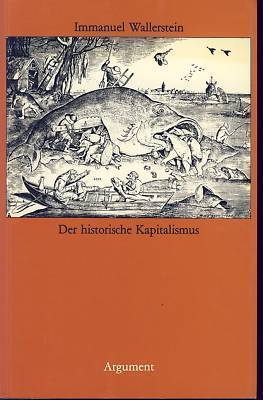 Modern art, the modern world and the capitalist world economy stand in a logical relation to one another. Immanuel Wallerstein described the formation of the “modern world system” and the “capitalist world economy” in several books (World Inequality. Origins and Perspectives on the World System, 1975; The Politics of the World-Economy, 1984; The Modern World-System, 1974-89; Historical Capitalism, 1983). The modern global system is a capitalist world economy as a result of European expansionism. The capitalist global economy arose in the sixteenth century in Europe on the back of the accumulation of capital, mechanisms of inequality (unequal exchange), and the division of labor. It is immensely important – if the global economy ought to function – for the world labor force to be ethnicized, for a correlation to be established between ethnicity and economic role; for example, at the international level by imposing low wages on non-European, Asian, or African workers, or at the national level, on immigrants. The visible classification of labor power and ethnic groups provides the index for income distribution, often justified by appealing to “traditions” that were in reality socially constructed. This institutionalized racism (and it goes beyond xenophobia) is one of the most significant pillars of historical capitalism. Racism serves as an all-embracing ideology to justify inequality (W.E.B. Dubois, The Philadelphia Negro: A Social Study, 1899).
The second key ideology that serves to maintain capitalism is that of universalism. “The belief in universalism laid the foundations for the ideological vault of historical capitalism.” While the ideology of racism as a mechanism served to control the direct producers (the laborers) worldwide, the ideology of universalism shored up control of the bourgeoisie. The concept of a neutral universal culture, which the ruling cadres of the respective countries all tended to deploy, functioned as the pillar of the global system. The ideology of progress and modernization supported this collection of ideas in forming a universalized whole. Universal culture, a knowledge of the same languages, literary and visual works all became the fraternal signs by which the capital accumulators of the world recognized one another. This universal culture was something that one needed to assimilate to, and historically it aided the expansion of capitalism worldwide. It guaranteed global sales markets for standardized goods, including those of the entertainment and culture industry, for example the worldwide distribution of American movies. In other words, universalism served colonialization and servitude.
Modernism and modern art were part of a European expansion, part of the expansive universal ideology, part of historical capitalism’s ideology of progress. Eurocentric culture as a part of the capitalist world system, beginning in Europe around 1500, is increasingly called into question by colonized countries. Contemporary art in the global age explores the possibilities of a progressive transformation of capitalist world system culture and the difficulties and contradictions that result from it, as well as the possibilities for developing an understanding of other cultures and their egality.
Modern art, the modern world and the capitalist world economy stand in a logical relation to one another. Immanuel Wallerstein described the formation of the “modern world system” and the “capitalist world economy” in several books (World Inequality. Origins and Perspectives on the World System, 1975; The Politics of the World-Economy, 1984; The Modern World-System, 1974-89; Historical Capitalism, 1983). The modern global system is a capitalist world economy as a result of European expansionism. The capitalist global economy arose in the sixteenth century in Europe on the back of the accumulation of capital, mechanisms of inequality (unequal exchange), and the division of labor. It is immensely important – if the global economy ought to function – for the world labor force to be ethnicized, for a correlation to be established between ethnicity and economic role; for example, at the international level by imposing low wages on non-European, Asian, or African workers, or at the national level, on immigrants. The visible classification of labor power and ethnic groups provides the index for income distribution, often justified by appealing to “traditions” that were in reality socially constructed. This institutionalized racism (and it goes beyond xenophobia) is one of the most significant pillars of historical capitalism. Racism serves as an all-embracing ideology to justify inequality (W.E.B. Dubois, The Philadelphia Negro: A Social Study, 1899).
The second key ideology that serves to maintain capitalism is that of universalism. “The belief in universalism laid the foundations for the ideological vault of historical capitalism.” While the ideology of racism as a mechanism served to control the direct producers (the laborers) worldwide, the ideology of universalism shored up control of the bourgeoisie. The concept of a neutral universal culture, which the ruling cadres of the respective countries all tended to deploy, functioned as the pillar of the global system. The ideology of progress and modernization supported this collection of ideas in forming a universalized whole. Universal culture, a knowledge of the same languages, literary and visual works all became the fraternal signs by which the capital accumulators of the world recognized one another. This universal culture was something that one needed to assimilate to, and historically it aided the expansion of capitalism worldwide. It guaranteed global sales markets for standardized goods, including those of the entertainment and culture industry, for example the worldwide distribution of American movies. In other words, universalism served colonialization and servitude.
Modernism and modern art were part of a European expansion, part of the expansive universal ideology, part of historical capitalism’s ideology of progress. Eurocentric culture as a part of the capitalist world system, beginning in Europe around 1500, is increasingly called into question by colonized countries. Contemporary art in the global age explores the possibilities of a progressive transformation of capitalist world system culture and the difficulties and contradictions that result from it, as well as the possibilities for developing an understanding of other cultures and their egality.
Text: Peter Weibel
